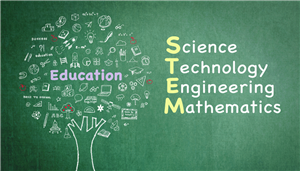Projects
Page Navigation
-
1st Grade
-
Light and Sound Unit
In this unit, our 1st graders are introduced to the concept of how vibrations make sound and how sounds make vibrations. Our staff introduces this content by first having the students read a story that asks why differentiating strings on a guitar produce different pitches of sound and then engage the students with a hands-on experiment. In this experiment, students design a makeshift guitar out of a box and rubber bands that differentiate in thickness to understand different vibrations create different pitches. After this experiment, the story continues and begins to introduce concepts of light such as opaqueness, transparency, translucence, and reflectiveness through an engineering design challenge to build a cover for a flashlight. In this design process students are given a flashlight with different materials to cover it with that exemplify the vocabulary words transparent, translucent, opaque, and reflective. The students then test each material and record their observation utilizing the vocabulary words.
-
Young and Adult Plant UnitIn this unit, our 1st graders gain an introduction to understanding the similarities and differences between young and adult organisms. Within this unit, our students are tasked with a series of hands-on activities and experiments to identify differentiating parts of plants of various species and comparing them to one another. Once the students understand how to pick out similarities and differences in plants, they embark on a field experience to the Arboretum, in which they observe multiple young and adult plant species and attempt to match which young and adult plants are a part of the same species based on their similarities.
-
Space Systems UnitWithin this unit our 1st grade students are introduced to the concepts of how the Earth orbits the sun and how it effects the amount of daylight during different days of the year as well as the moon cycle and how the moon orbits the earth. Students are engaged by reading selected texts as well as utilizing online resources to identify basic similarities in and differences between texts on the same topic and comprehend key ideas.
-
Aligned Standards:Light and Sound UnitELA
- 1-RI-2: Identify the main topic and retell key details of a text.
- 1-RI-4: Use knowledge of context clues and picture clues to determine the meaning of unknown words and phrases.
- 1-PS4-1: Plan and conduct investigations to provide evidence that vibrating materials can make sound and that sound can make materials vibrate.
- 1-PS4-2: Make observations to construct an evidence-based account that objects can be seen only when illuminated.
- 1-PS4-3: Plan and conduct an investigation to determine the effect of placing objects made with different materials in the path of a beam of light.
- 1-PS4-4: Use tools and materials to design and build a device that uses light or sound to solve the problem of communicating over a distance.
Young/Adult Plant Unit
ELA- RI6 Distinguish between information provided by pictures or other illustrations and information provided by the words in a text.
- RL7 Use illustrations and details in a story to describe its characters, setting, or events.
- LS3-1 Make observations to construct an evidence based account that young plants and animals are alike, but not exactly like, their parents.
Space UnitELA- RI4- Use knowledge of word structure, context clues, and picture clues to determine the meaning of unknown words and phrases.
- RI9- Identify basic similarities in and differences between two texts on the same topic (eg. Illustrations, descriptions, or procedures).
- 1W2- Write informative/explanatory texts in which they introduce a topic, use facts, and definitions to develop points, and provide a concluding statement or section.
- ESS1-1- Use observations of the sun, moon, and stars to describe patterns that can be predicted.
- ESS1-2- Make observations at different times of year to relate the amount of daylight to the time of year.


